Cover
Title page
Copyright page
Contents
Preface
Part One – The Dimensions Of Reading [1]
1 The Activity and Art of Reading [3]
Active Reading [4]
The Goals of Reading: Reading for Information and Reading for Understanding [7]
Reading as Learning: The Difference Between Learning by Instruction and Learning by Discovery [11]
Present and Absent Teachers [14]
2 The Levels of Reading [16]
3 The First Level of Reading: Elementary Reading [21]
Stages of Learning to Read [24]
Stages and Levels [26]
Higher Levels of Reading and Higher Education [28]
Reading and the Democratic Ideal of Education [29]
4 The Second Level of Reading: Inspectional Reading [31]
Inspectional Reading I: Systematic Skimming or Pre-reading [32]
1. Look at the title page and, if the book has one, at its preface
2. Study the table of contents
3. Check the index
4. Read the publisher's blurb
5. Look now at the chapters that seem to be pivotal to its argument
6. Turn the pages, dipping in here and there, reading a paragraph or two, sometimes several pages in sequence, never more than that
Inspectional Reading II: Superficial Reading [36]
On Reading Speeds [38]
Fixations and Regressions [40]
The Problem of Comprehension [41]
Summary of Inspectional Reading [43]
5 How to Be a Demanding Reader [45]
The Essence of Active Reading: The Four Basic Questions a Reader Asks [46]
1. What is the book about as a whole?
2. What is being said in detail, and how?
3. Is the book true, in whole or part?
4. What of it?
How to Make a Book Your Own [48]
1. Underlining
2. Vertical lines at the margin
3. Star, asterisk, or other doodad at the margin
4. Numbers in the margin
5. Numbers of other pages in the margin
6. Circling of key words or phrases
7. Writing in the margin, or at the top or bottom of the page
The Three Kinds of Note-making [51]
Structural
Conceptual
Dialectical
Forming the Habit of Reading [52]
From Many Rules to One Habit [54]
Part Two – The Third Level Of Reading: Analytical Reading [57]
6 Pigeonholing a Book [59]
The Importance of Classifying Books [60]
What You Can Learn from the Title of a Book [61]
Practical vs. Theoretical Books [65]
Kinds of Theoretical Books [70]
History
Science
Philosophy
7 X-raying a Book [75]
Of Plots and Plans: Stating the Unity of a Book [78]
Mastering the Multiplicity: The Art of Outlining a Book [83]
The Reciprocal Arts of Reading and Writing [90]
Discovering the Author's Intentions [92]
The First Stage of Analytical Reading [94]
8 Coming to Terms with an Author [96]
Words vs. Terms [96]
Finding the Key Words [100]
Technical Words and Special Vocabularies [103]
Finding the Meanings [106]
9 Determining an Author's Message [114]
Sentences vs. Propositions [117]
Finding the Key Sentences [121]
Finding the Propositions [124]
Finding the Arguments [128]
Finding the Solutions [135]
The Second Stage of Analytical Reading [136]
10 Criticizing a Book Fairly [137]
Teachability as a Virtue [139]
The Role of Rhetoric [140]
The Importance of Suspending Judgment [142]
The Importance of Avoiding Contentiousness [145]
On the Resolution of Disagreements [147]
11 Agreeing or Disagreeing with an Author [152]
Prejudice and Judgment [154]
Judging the Authors Soundness [156]
Uninformed
Misinformed
Illogical
Judging the Authors Completeness [160]
The Third Stage of Analytical Reading [163]
I. The First Stage of Analytical Reading: Rules for Finding What a Book Is About
II. The Second Stage of Analytical Reading: Rules for Interpreting a Book's Contents
III. The Third Stage of Analytical Reading: Rules for Criticizing a Book as a Communication of Knowledge
12 Aids to Reading [168]
The Role of Relevant Experience [169]
Other Books as Extrinsic Aids to Reading [172]
How to Use Commentaries and Abstracts [174]
How to Use Reference Books [176]
How to Use a Dictionary [178]
How to Use an Encyclopedia [182]
Part Three – Approaches To Different Kinds Of Reading Matter [189]
13 How to Read Practical Books [191]
The Two Kinds of Practical Books [193]
The Role of Persuasion [197]
What Does Agreement Entail in the Case of a Practical Book? [199]
14 How to Read Imaginative Literature [203]
How Not to Read Imaginative Literature [204]
General Rules for Reading Imaginative Literature [208]
15 Suggestions for Reading Stories, Plays, and Poems [215]
How to Read Stories [217]
A Note About Epics [222]
How to Read Plays [223]
A Note About Tragedy [226]
How to Read Lyric Poetry [227]
16 How to Read History [234]
The Elusiveness of Historical Facts [235]
Theories of History [237]
The Universal in History [239]
Questions to Ask of a Historical Book [241]
How to Read Biography and Autobiography [244]
How to Read About Current Events [248]
A Note on Digests [252]
17 How to Read Science and Mathematics [255]
Understanding the Scientific Enterprise [256]
Suggestions for Reading Classical Scientific Books [258]
Facing the Problem of Mathematics [260]
Handling the Mathematics in Scientific Books [264]
A Note on Popular Science [267]
18 How to Read Philosophy [270]
The Questions Philosophers Ask [271]
Modern Philosophy and the Great Tradition [276]
On Philosophical Method [277]
On Philosophical Styles [280]
1. The Philosophical Dialogue
2. The Philosophical Treatise or Essay
3. The Meeting of Objections
4. The Systemization of Philosophy
5. The Aphoristic Style
Hints for Reading Philosophy [285]
On Making Up Your Own Mind [290]
A Note on Theology [291]
How to Read "Canonical" Books [293]
19 How to Read Social Science [296]
What Is Social Science? [297]
The Apparent Ease of Reading Social Science [299]
Difficulties of Reading Social Science [301]
Reading Social Science Literature [304]
Part Four – The Ultimate Goals Of Reading [307]
20 The Fourth Level of Reading: Syntopical Reading [309]
The Role of Inspection in Syntopical Reading [313]
The Five Steps in Syntopical Reading [316]
1. Finding the Relevant Passages
2. Bringing the Authors to Terms
3. Getting the Questions Clear
4. Defining the Issues
5. Analyzing the Discussion
The Need for Objectivity [323]
An Example of an Exercise in Syntopical Reading: The Idea of Progress [325]
The Syntopicon and How to Use It [329]
On the Principles That Underlie Syntopical Reading [333]
Summary of Syntopical Reading [335]
I. Surveying the Field Preparatory to Syntopical Reading
II. Syntopical Reading of the Bibliography Amassed in Stage I
21 Reading and the Growth of the Mind [337]
What Good Books Can Do for Us [338]
The Pyramid of Books [341]
The Life and Growth of the Mind [344]
Appendix A. A Recommended Reading List [347]
Appendix B. Exercises and Tests at the Four Levels of Reading [363]
Introductory [363]
I. Exercises and Tests at the First Level of Reading: Elementary Reading [366]
John Stuart Mill 1806–1873
Test A: Questions about the biographical sketch of John Stuart Mill
Sir Isaac Newton 1642–1727
Test B: Questions about the biography of Sir Isaac Newton
II. Exercises and Tests at the Second Level of Reading: Inspectional Reading [377]
Dante Alighieri 1265–1321
Table of Contents of the Divine Comedy
Hell
Purgatory
Paradise
Test C: First series of questions about the Divine Comedy of Dante
Test D: Further questions about Dante's Divine Comedy
Charles Darwin 1809–1882
Table of Contents of the Origin of Species
Test E: Questions about Darwin and about The Origin of Species
Test F: Further questions about Darwin and The Origin of Species
III. Exercises and Tests at the Third Level of Reading: Analytical Reading [402]
IV. Exercises and Tests at the Fourth Level of Reading: Syntopical Reading [405]
From Book I of Aristotle's Politics
From Book I of Rousseau's the Social Contract
Test G: Here Is the First Set of Questions About Aristotle and Rousseau
Test H: Here Is the Second Set of Questions
Answers to Questions [413]
Test A
Test B
Test C
Test D
Test E
Test F
Test G
Test H
Index [421]
Summary
The Four Basic Questions a Reader Asks [46]
1. What is the book about as a whole? [46]
2. What is being said in detail, and how? [47]
3. Is the book true, in whole or part? [47]
4. What of it? [47]
Rules of Reading
Level 1: Elementary Reading [21]
Level 2: Inspectional Reading [31]
Stage 1: Systematic Skimming or Pre-reading [32]
1. Look at the title page and, if the book has one, at its preface [32]
2. Study the table of contents [33]
3. Check the index [34]
4. Read the publisher's blurb [34]
5. Look now at the chapters that seem to be pivotal to its argument [35]
6. Turn the pages, dipping in here and there, reading a paragraph or two, sometimes several pages in sequence, never more than that [35]
Stage 2: Superficial Reading [36]
1. Read through without ever stopping
Level 3: Analytical Reading [163]
Stage 1: Finding What a Book is About [94]
1. Classify the book according to kind and subject matter [60]
2. State what the whole book is about with the utmost brevity [75]
3. Enumerate its major parts in their order and relation, and outline these parts as you have outlined the whole [76]
4. Find out what the author's problems were [92]
Stage 2: Interpreting a Book's Contents [136]
5. Find the important words and through them come to terms with the author [98]
6. Mark the most important sentences in a book and discover the propositions they contain [120]
7. Locate or construct the basic arguments by finding them in the connection of sentences [128]
8. Find out what the author's solutions are [135]
Stage 3: Criticizing a Book as a Communication of Knowledge [164]
A. General Maxims of Intellectual Etiquette [137]
9. Do not begin criticism until you have completed your outline and your interpretation of the book [142]
10. Do not disagree disputatiously or contentiously [145]
11. Demonstrate that you recognize the difference between knowledge and mere personal opinion by presenting good reasons for any critical judgment you make [150]
B. Special Criteria for Points of Criticism [152]
12. Show wherein the author is uninformed [157]
13. Show wherein the author is misinformed [157]
14. Show wherein the author is illogical [158]
15. Show wherein the author's analysis or account is incomplete [161]
Level 4: Syntopical Reading [335]
Stage 1: Surveying the Field Preparatory to Syntopical Reading [335]
1. Create a tentative bibliography of your subject [310]
2. Inspect all of the books on the tentative bibliography to ascertain which are germane to your subject, and also to acquire a clearer idea of the subject [314]
Stage 2: Syntopical Reading of the Bibliography [336]
1. Find the most relevant passages [316]
2. Bring the authors to terms [318]
3. Get the questions clear [319]
4. Define the issues [320]
5. Analyze the discussion [321]
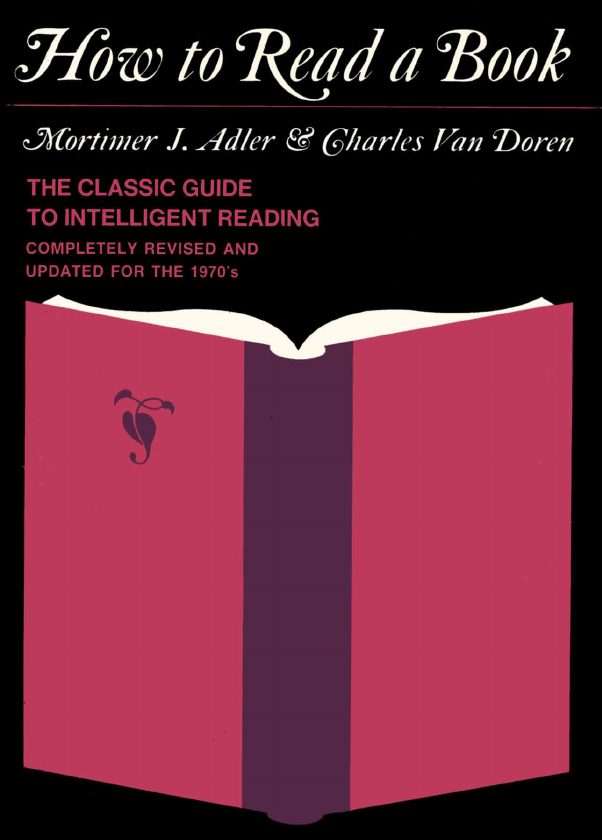

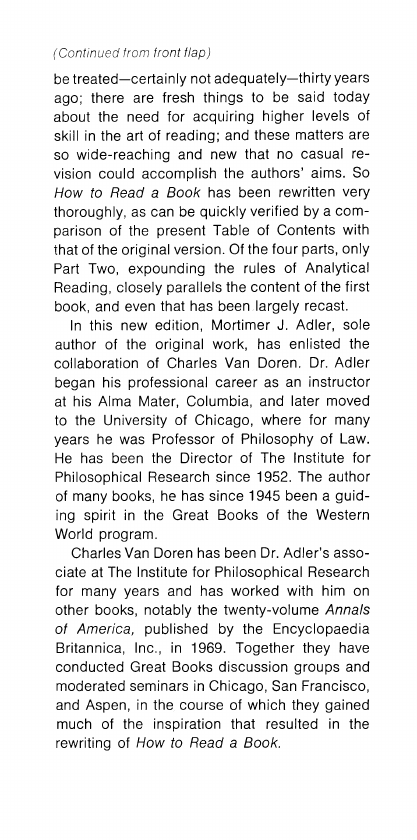
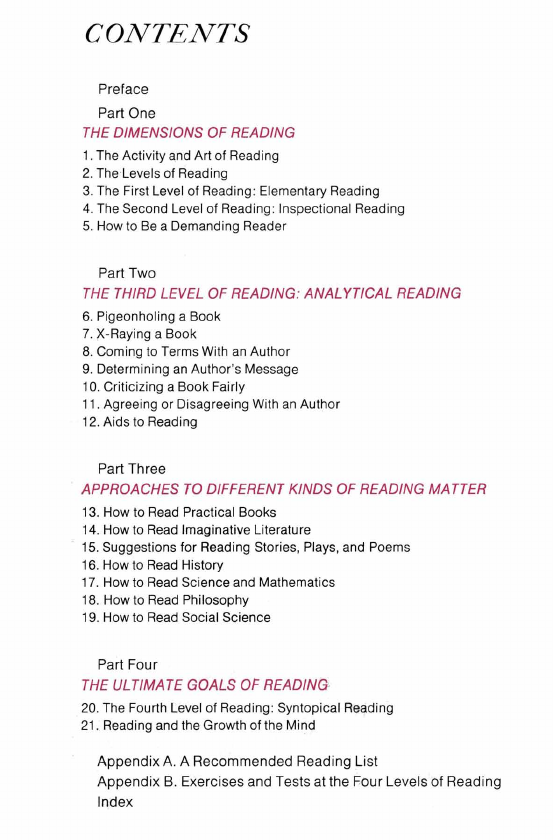
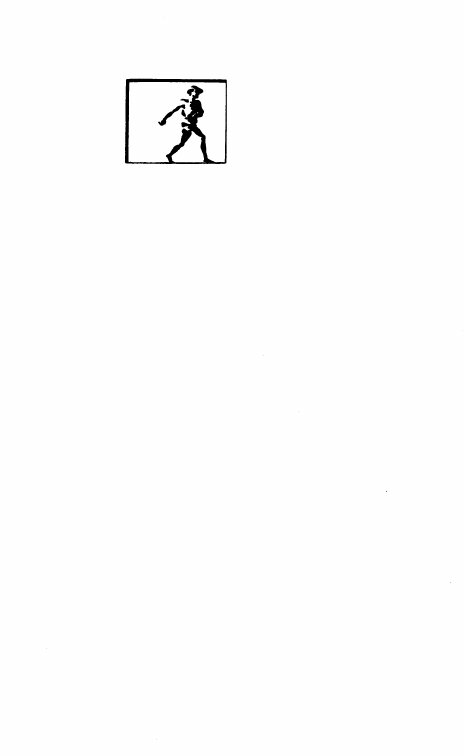
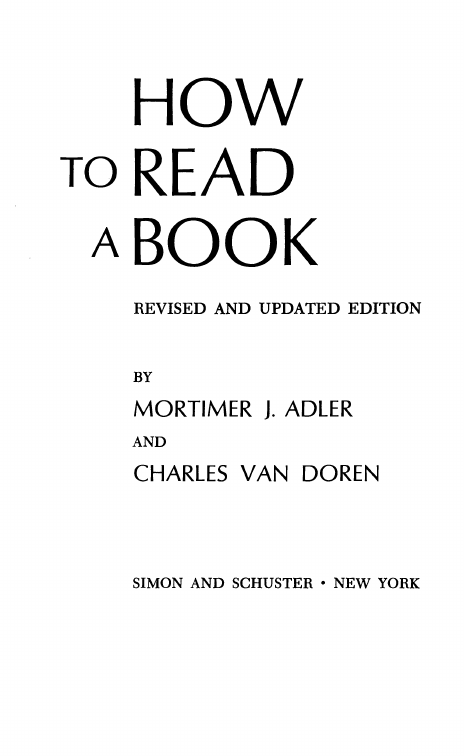
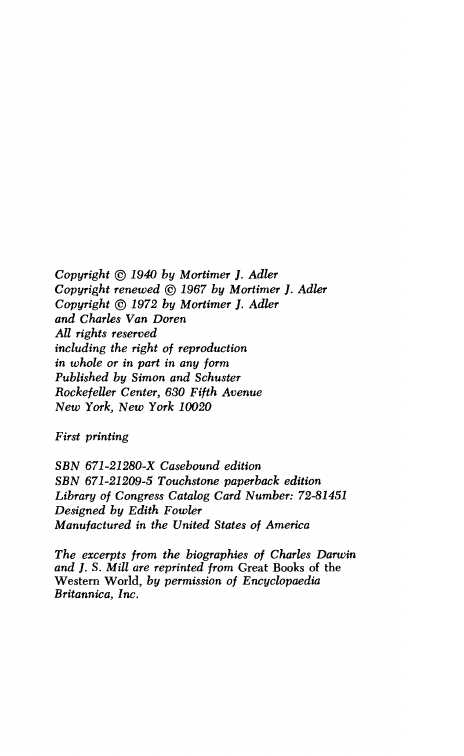








 2023年江西萍乡中考道德与法治真题及答案.doc
2023年江西萍乡中考道德与法治真题及答案.doc 2012年重庆南川中考生物真题及答案.doc
2012年重庆南川中考生物真题及答案.doc 2013年江西师范大学地理学综合及文艺理论基础考研真题.doc
2013年江西师范大学地理学综合及文艺理论基础考研真题.doc 2020年四川甘孜小升初语文真题及答案I卷.doc
2020年四川甘孜小升初语文真题及答案I卷.doc 2020年注册岩土工程师专业基础考试真题及答案.doc
2020年注册岩土工程师专业基础考试真题及答案.doc 2023-2024学年福建省厦门市九年级上学期数学月考试题及答案.doc
2023-2024学年福建省厦门市九年级上学期数学月考试题及答案.doc 2021-2022学年辽宁省沈阳市大东区九年级上学期语文期末试题及答案.doc
2021-2022学年辽宁省沈阳市大东区九年级上学期语文期末试题及答案.doc 2022-2023学年北京东城区初三第一学期物理期末试卷及答案.doc
2022-2023学年北京东城区初三第一学期物理期末试卷及答案.doc 2018上半年江西教师资格初中地理学科知识与教学能力真题及答案.doc
2018上半年江西教师资格初中地理学科知识与教学能力真题及答案.doc 2012年河北国家公务员申论考试真题及答案-省级.doc
2012年河北国家公务员申论考试真题及答案-省级.doc 2020-2021学年江苏省扬州市江都区邵樊片九年级上学期数学第一次质量检测试题及答案.doc
2020-2021学年江苏省扬州市江都区邵樊片九年级上学期数学第一次质量检测试题及答案.doc 2022下半年黑龙江教师资格证中学综合素质真题及答案.doc
2022下半年黑龙江教师资格证中学综合素质真题及答案.doc